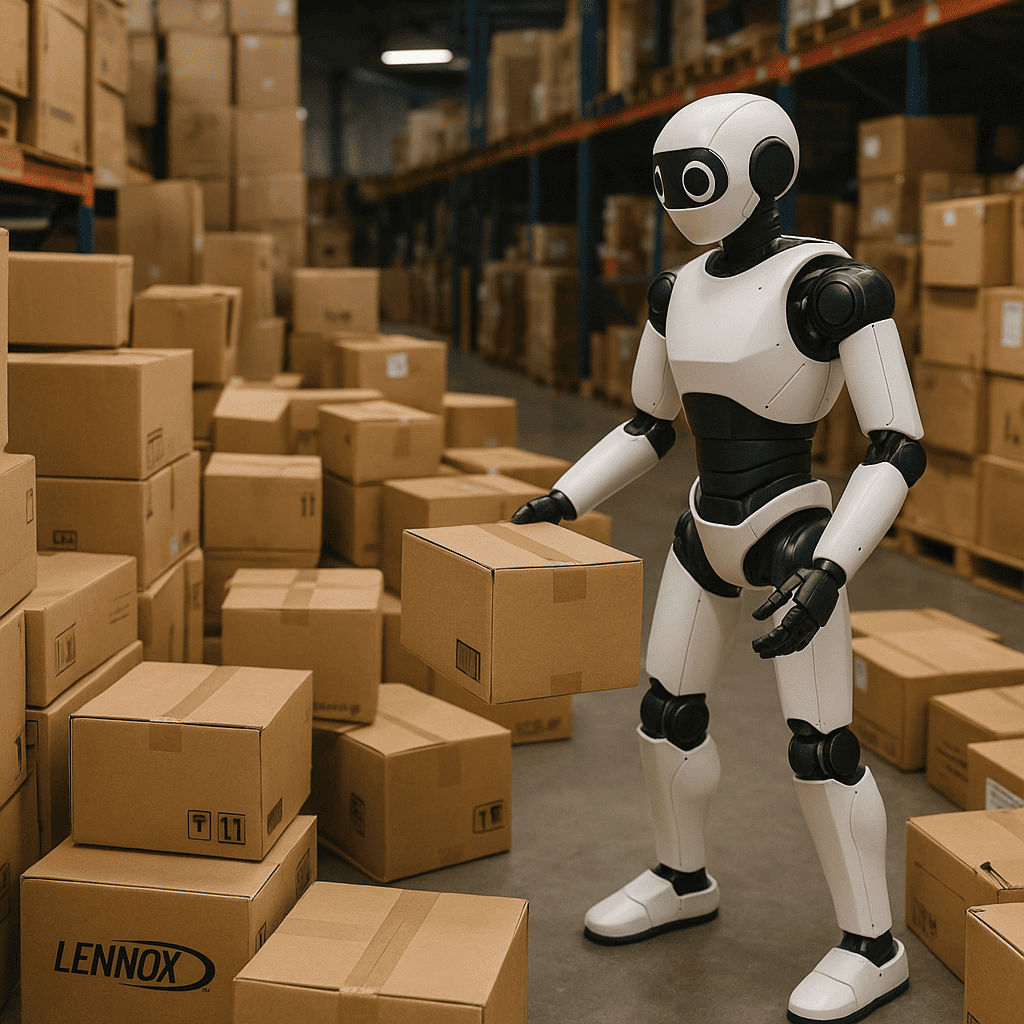Ever watched a robot climb stairs or dodge obstacles without falling over? I just did and it wasn’t some sci-fi movie. It was a real demo from Skild AI, a startup quietly backed by Amazon, SoftBank, and even Jeff Bezos himself.
They’re building something called the Skild Brain, and it’s meant to help robots think more like humans. Not just follow scripts, actually respond to messy, real-world stuff.
So instead of one robot for one task, we might finally get machines that can handle a bit of everything.
Sorting dishes. Navigating warehouses. Balancing on one leg.
Sounds wild, right? But it’s here. And Skild AI’s approach is surprisingly grounded and kind of brilliant.
Let’s break down what they’re doing and why it matters.
Table of Contents
Robots That Actually Think? Skild AI Says Yes
Let’s be honest—most robots we’ve seen outside sci-fi movies are… pretty limited. They repeat tasks, stay in one place, and freeze up when anything unexpected happens.
But Skild AI? They’re doing something different.
They’ve built a model called Skild Brain, and it’s designed to run on almost any kind of robot. Not just industrial arms on factory lines, but actual walking, grabbing, climbing, real-world robots.
And here’s what makes it wild: these machines can learn from each other.
A Shared Brain Across All Robots
Imagine this: A robot in Seoul is stacking boxes. Another in Chicago is sorting dishes. Both are learning. And both are feeding those learnings back into the same system.
That’s the core idea behind Skild AI’s shared brain model.
Rather than starting from scratch with every robot, Skild lets them all contribute to one “brain” that keeps getting smarter. The more robots using it, the better it gets.
This is a huge deal for robotics, which typically lags behind software because every machine has to be trained individually. But if learning becomes collective?
It speeds up everything.
Backed by Big Names — And Big Money

Skild AI isn’t just some scrappy lab project. It’s backed by heavyweights like:
- Amazon
- SoftBank
- Jeff Bezos
- Sequoia Capital
- Khosla Ventures
They raised $300 million in Series A funding, and were valued at $1.5 billion as of last year.
That’s a lot of confidence—and a lot of pressure.
But when you see what their robots can do, it starts to make sense.
Climbing Stairs and Catching Themselves Mid-Fall
In demo videos, Skild-powered robots:
- Walked up uneven stairs
- Balanced after being shoved
- Picked up objects in cluttered spaces
These aren’t flashy stunts. They’re practical tasks that robots usually struggle with.
Why?
Because real-world environments are messy. Dishes aren’t always in the same place. Stairs aren’t perfectly spaced. People accidentally bump into machines.
Skild’s robots handle all that by processing spatial reasoning and adapting in real-time.
No hard-coded paths. No rigid scripts. Just awareness and reaction.
The Data Problem That Nobody Talks About
Here’s something you don’t hear every day: AI has a robotics-specific data problem.
When you’re training a language model, there’s the whole internet. Same for image models—endless photos, videos, and labels.
But for robots?
There’s almost nothing. No open datasets. No massive archives of robots failing or succeeding in daily life.
Skild’s CEO, Deepak Pathak, puts it simply:
“Unlike language or vision, there is no data for robotics on the internet.”
So how do they solve this?
They generate their own—using simulated environments and real-world action videos. Then, they fine-tune the model with live data from deployed robots.
Every robot running Skild Brain becomes a little lab—sending back lessons in real-time.
Safety Isn’t an Afterthought

Let’s be real: Robots that learn on the fly sound exciting, but also a little… dangerous?
Skild gets that.
Their system includes built-in power limits so robots don’t apply unsafe force—especially important in environments with humans.
You don’t want a robot mistaking your foot for a box.
It’s thoughtful touches like these that show Skild isn’t just chasing cool demos. They’re building for the real world.
Where Skild AI Is Already Showing Up
Skild isn’t just in testing phases. They’ve already got some serious clients, including:
- LG CNS (the IT arm of LG Group)
- Partners in logistics and industrial robotics (though names are under wraps)
So we’re talking about real deployments.
Warehouses. Manufacturing. Maybe even homes someday.
And thanks to the shared-brain model, every client makes the whole system better.
Why This Approach Could Actually Work
Here’s what makes Skild’s method stand out:
- Scalable learning: One robot’s experience becomes everyone’s knowledge.
- Flexible hardware: The Skild Brain works across robot types.
- Self-improvement: It gets better with each deployment.
- Less manual training: Saves time and engineering effort.
In an industry where progress is often slow and siloed, this is a fresh approach.
They’re treating robots more like evolving software—and less like static machines.
The Talent Behind the Code
Skild isn’t just smart tech. It’s smart people.
The team includes former engineers and researchers from:
- Tesla
- Meta
- Nvidia
Co-founder Abhinav Gupta previously founded Meta’s robotics lab in Pittsburgh. So the leadership has both the academic chops and real-world experience.
This isn’t a trend-chasing group. It’s people who’ve been thinking about this space for years—and now have the backing to move fast.
So, What Could This Mean for You?
Maybe you’re not managing a fleet of warehouse robots. But the ripple effect here matters.
Smarter robotics could mean:
- Faster delivery systems
- More responsive home assistants
- Safer machines in hospitals or elderly care
- Flexible bots for disaster relief or agriculture
Skild AI isn’t just building for today’s factories. They’re laying groundwork for the robots that might live in our homes, our cities, and our everyday spaces.
And that’s a big shift.
Final Thoughts: It’s Not Hype—It’s Happening
The buzz around AI is everywhere. But most of it stays on screens—text, code, images.
What Skild AI is doing brings AI into the physical world. Into environments where unpredictability is the norm and mistakes actually matter.
And they’re not claiming to have it all figured out.
But their model is learning. Adapting. Evolving.
With every robot.
Backed by giants. Fueled by experience. And quietly showing us what’s possible when AI steps off the page and into the world.
Anthropic has also been making big strides with its AI coding abilities.



